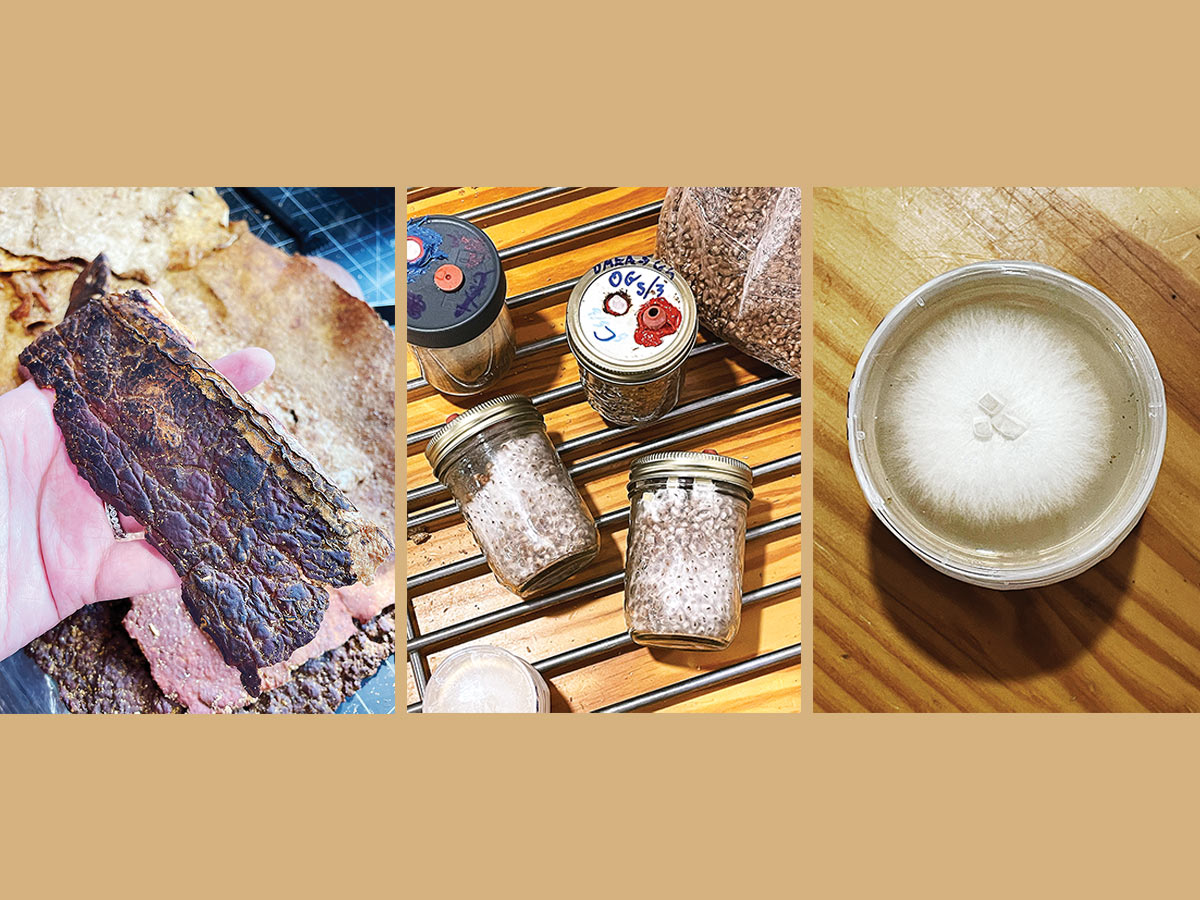
These magic mushrooms are in the innovation spotlight
 MycoFuture’s North Atlantic petri of potential (Courtesy of MycoFutures North Atlantic)
MycoFuture’s North Atlantic petri of potential (Courtesy of MycoFutures North Atlantic)
When Stephanie Lipp and her partner, Leo Gillis, moved from Ontario to Bonavista, Newfoundland, the plan was to start a gourmet mushroom farm in the rural town, three hours outside of St. John’s. They envisioned a community hub where locals and tourists could come and learn, which would help to address food insecurity—a major issue in outport communities like these.
They began the process of building the business while enrolled in Genesis, an eight-week business accelerator program. But as they began raising money, the co-founders of what would become MycoFutures North Atlantic realized that their dream needed an “exportable element.” That is, something they could sell that could endure long-distance travel. They first considered health supplements, then later landed on mushroom leather.
“We’d always said we wanted to do materials one day, when we were more established in our farm,” says Lipp, “but one of our advisers said we should just go for it because materials are really hot right now, and needed.” They thought about it for a week, and then took the plunge, changing their entire business plan four weeks into the accelerator program.
Within three months, Gillis, who has no formal training in science, had produced their first postage stamp sized piece of “leather” made from mushrooms. Shortly after, Lipp won a pitch competition that helped them raise most of their early capital. Since then, it’s been a whirlwind for these accidental clean tech entrepreneurs, who have been learning about the start-up landscape at the same time that they’re working on perfecting their leather, which is still in the R&D phase.
Using a proprietary, toxic chemical-free tanning method, they’ve successfully made a few items from leather they’ve grown—a cardholder, a pair of earrings—though they’re still nailing down details like how to create different textures or colours. The company already has a line-up of eager, smaller fashion brands ready to test initial prototypes, clamouring for the day when they're able to respond to customer demand and go to market with products made from a more sustainable, ethical alternative to animal leather. And that excitement is part of a much larger groundswell of enthusiasm for all things fungi.
From packaging to plastics and psychedelics that could offer an alternative to traditional mental health therapies, mushrooms in various forms and applications are having a moment in the innovation spotlight, captivating researchers, entrepreneurs and consumers alike. In February, the journal Science Advances published research claiming that Fomes fomentarius, a large hoof-shaped fungus that grows wild in many places around the world, could soon be used to replace fossil fuel produced plastics. And in May last year, British designer Stella McCartney debuted the first luxury handbag made from mushroom leather, created in partnership with Bolt Threads, whose Mylo fabric is backed by investment from a consortium of big-name brands including Lululemon and Adidas.
As for how you actually make leather, or anything that’s not pasta ai funghi, from mushrooms? That’s where mycelium comes in. In the simplest terms, a mycelium is a root-like system, an intertwined network that grows out of spores and works together as one giant organism. The thing we’d call a “mushroom” is actually the “fruiting body,” which is the result of the mycelium breaking the surface in search of air and light.
When humans try to make various things out of this mycelium, the goal is usually to encourage it to grow as densely and as thickly as possible, usually within a mould of some kind to give it the desired shape, built on a “substrate,” an underlying layer of a food source for the spores. Just ask Joseph Dahmen, an associate at the University of British Columbia’s School of Architecture and Landscape Architecture and co-founder of Watershed Materials LLC. In 2013, he and his partner Amber Frid-Jimenez were in search of a more sustainable alternative to polystyrene for some architectural landscape installations their design firm was working on at the time. This led Dahmen to emerging research around mycelium biocomposites, which he describes as “mushroom-based materials [that] have similar strength and thermal resistance of polystyrene foams, but are less environmentally intensive to produce, and are fully biodegradable at the end of life.”
With help from students and university staff, Dahmen was able to create one of these mycelium biocomposites using locally sourced oyster mushroom spores and alder sawdust that had been sterilized to remove any other competing microorganisms. That initial experiment was turned into six benches that sat outside of UBC’s bookstore until they were composted a years later and used to enrich the soil at the university’s nursery. They’re gone without a trace except for the positive impact they had on the wider ecosystem—and that’s the point.
Dahmen’s lab is now doing exciting work with building and construction industry partners that will combine mycelium material and 3D printing technology “that will enable us to 3-D print living buildings that are dynamic and self-healing,” he says. If you’re at UBC’s botanical garden this fall, look out for the 3D-printed mycelium-based composting toilet that he and his team are testing.
Back in Ontario, Lipp is motivated by a similar passion for the earth’s wider well-being. “Our ultimate achievement will be when we can put this in electric vehicles or public transit seating,” she says. “The biggest takeaway for anyone looking at mushrooms, or new materials in general, is taking a regenerative lesson from them.”
FOCUS ON INNOVATION
Read about CPAs who are charting innovative paths to the future, and check out our Q+A with MaRS CFO Nicole Barry, who shares her views on where Canada stands on the world stage in terms of innovation.